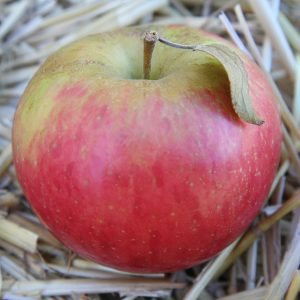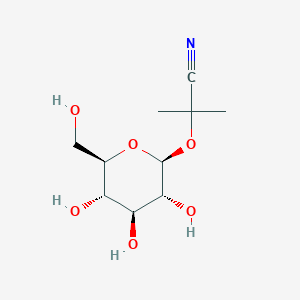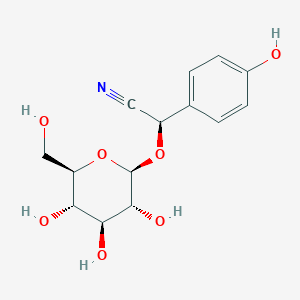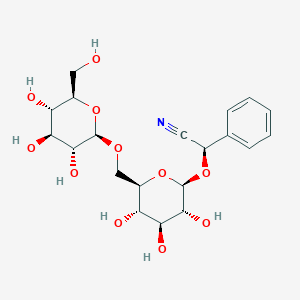Natural poisons are abundant in the foods we eat every day, such as in apples, peaches, chickpeas, lima beans, bamboo shoots, flaxseeds… [1] In all of these examples, a class of chemicals called cyanogenic glycosides are responsible.

Apple. Credit: Wikimedia
Glycosides are simply molecules where a sugar is bonded to another group. For example, in adenosine, one of the nucleosides in RNA, an adenine nitrogenous base is bonded to a ribose sugar. Meanwhile, the term cyanogenic refers to the nitrile moiety in the molecule, also known as a cyano group. So, a cyanogenic glycoside is just a sugar molecule that has a cyano group attached somewhere.
Examples of these include taxiphyllin in bamboo shoots, amygdalin in almonds and apples, and linamarin in cassava and flax. [1] When these compounds are ingested, the cyano group is liberated from the molecule as cyanide. This cyanide can later go on to poison you! This is the reason why there have been deaths reported from the consumption of bamboo shoots, cassava, bitter almond seeds… Which is why your chili bamboo, tapioca pearls, and almond tofu have to be properly prepared!

Linamarin

Taxiphyllin

Amygdalin
(all images from PubChem)
In these images, it is quite obvious where the cyanide comes from. With a discerning eye, one can even tell which amino acids were used to synthesize these molecules (valine for linamarin, tyrosine for taxiphyllin, and phenylalanine for amygdalin). You can look at the metabolic pathways on BioCyc if you’re interested!
Why would the plant do this to us? It’s a defense mechanism for the plant, which deters herbivores from eating it and increasing the plant’s chances of survival. For example, linamarin in cassava is broken down by linamarase when the cell walls are broken, which leads to the release of cyanide. [2] Since cassava is an important crop in some parts of the world, there are attempts to reduce linamarin levels to reduce the toxicity of the plant!
Plants have many ways of surviving despite their sessile nature. This includes the production of poisonous chemicals that are unfortunately present in many of the foods we consume. In the case we discussed above, many plants produce cyanogenic glycosides to defend against predators! These produce cyanide, which can then slow the production of ATP and prevents you from being able to utilize oxygen. But that’s a story for another post!
Sources:
[1] Bolarinwa IF, Oke MO, Olaniyan SA, Ajala AS. A Review of Cyanogenic Glycosides in Edible Plants. Toxicology – New Aspects to This Scientific Conundrum. Published online October 26, 2016. doi:10.5772/64886
[2] Santana MA, Vásquez V, Matehus J, Aldao RR. Linamarase Expression in Cassava Cultivars with Roots of Low- and High-Cyanide Content. Plant Physiol. 2002;129(4):1686-1694. doi:10.1104/pp.000927
